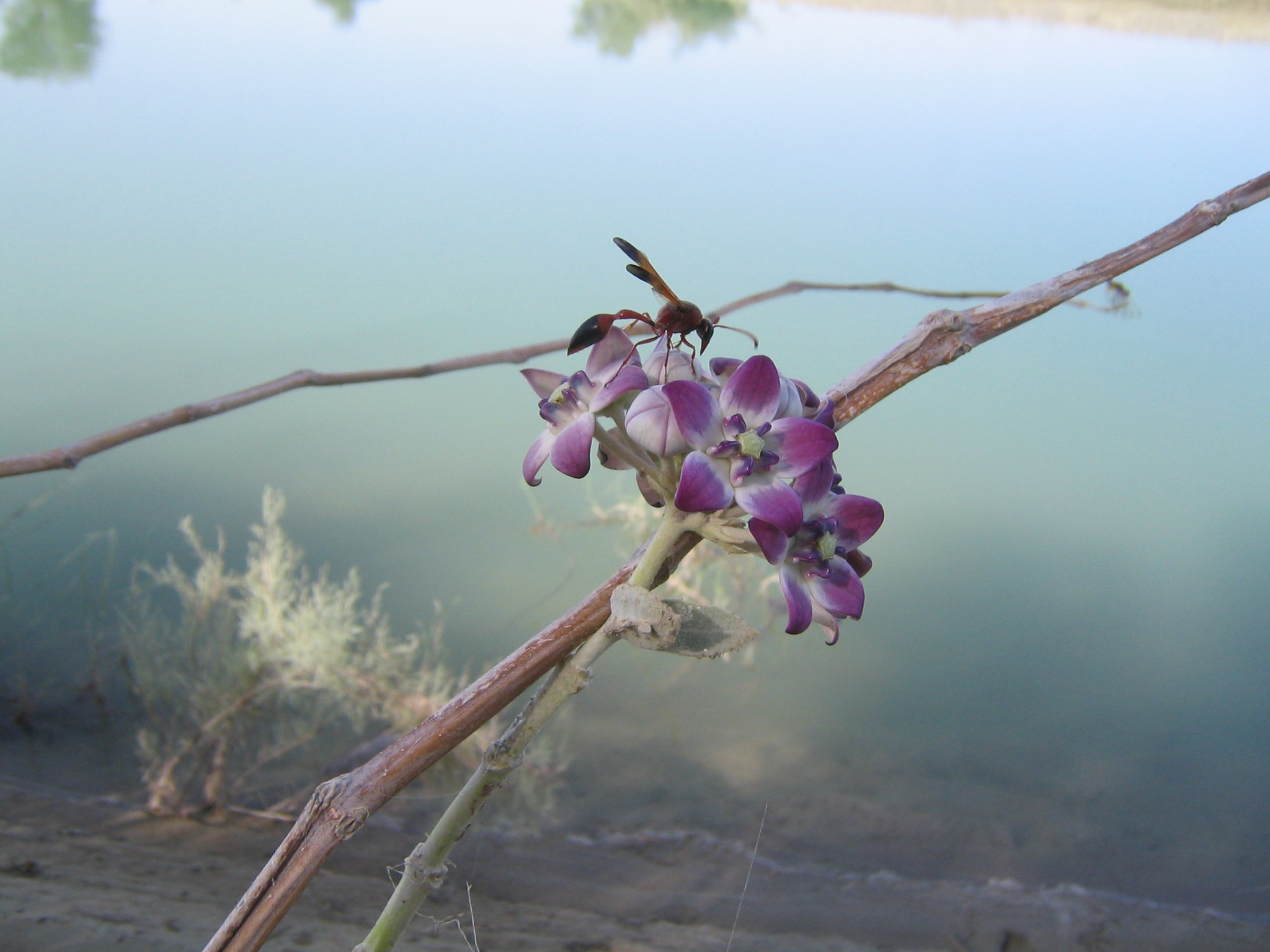Photo : Milkweed
Province:
Sistan and BaluchistanAdditional Information:
Description:
milkweeds, is an American genus of herbaceous perennial, dicotyledonous plants that contains over 140 known species. It previously belonged to the family Asclepiadaceae, but this is now classified as the subfamily Asclepiadoideae of the dogbane family Apocynaceae. Milkweed is named for its milky sap, which consists of a latex containing alkaloids and several other complex compounds including cardenolides.[2] Some species are known to be toxic. Carl Linnaeus named the genus after Asclepius, the Greek god of healing, because of the many folk-medicinal uses for the milkweed plants. Pollination in this genus is accomplished in an unusual manner. Pollen is grouped into complex structures called pollinia (or "pollen sacs"), rather than being individual grains or tetrads, as is typical for most plants. The feet or mouthparts of flower-visiting insects such as bees, wasps and butterflies, slip into one of the five slits in each flower formed by adjacent anthers. The bases of the pollinia then mechanically attach to the insect, so that a pair of pollen sacs can be pulled free when the pollinator flies off, assuming the insect is large enough to produce the necessary pulling force (if not, the insect may become trapped and die).[3] Pollination is effected by the reverse procedure in which one of the pollinia becomes trapped within the anther slit.
Download this photo